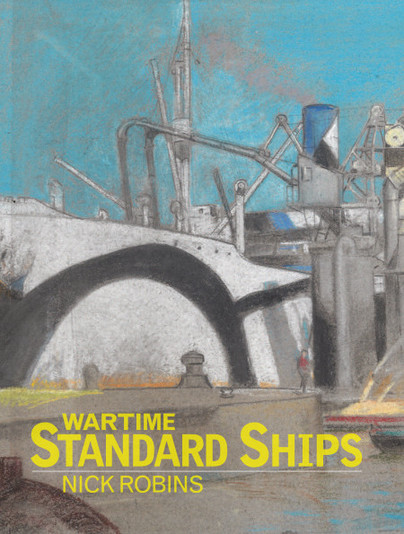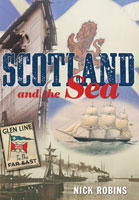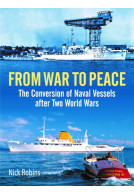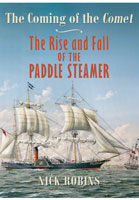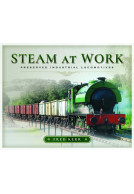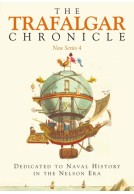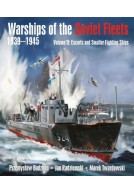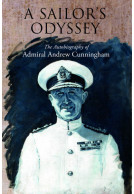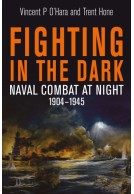Wartime Standard Ships (Hardback)
(click here for international delivery rates)
Order within the next 10 hours, 10 minutes to get your order processed the next working day!
Need a currency converter? Check XE.com for live rates
| Other formats available | Price |
|---|---|
| Wartime Standard Ships ePub (35.3 MB) Add to Basket | £10.00 |
In both World Wars there arose a pressing need for merchant tonnage both to supplement existing ships but, more importantly, to replace ships that had been sunk by enemy action, and the key to the Allied strategy in both wars was a massive programme of merchant shipbuilding. This need gave rise to a series of standard designs with increasing emphasis on prefabrication and a progression towards welded hulls.
This new book tells the remarkable story of the design and construction of the many types that not only contributed to their country’s war efforts, but were also responsible for a cultural change in world shipbuilding that would lay the foundations for the post-war industry. The story begins in the First World War with the National type cargo ships which were the first examples of prefabricated construction. The best known of all types of wartime standard ships, of course, were the Liberty ships and their successor, the better equipped Victory ships, both built in the United States. Some 2,700 Liberty ships were built and this incredible achievement undoubtedly saved the Allies from losing the War. In Canada, the Ocean and Park ships made a further major contribution. Germany and Japan also introduced standard merchant shipbuilding programmes during the Second World War and these are covered in detail. The many different types and designs are all reviewed and their roles explained, while the design criteria, innovative building techniques and the human element of their successful operation is covered.
Some of the story has been told piecemeal in a range of diverse books and articles, a few with extensive fleet lists. However, the complete history of the twentieth century wartime-built standard merchant ship has not previously been written, so this new volume recording that history within its appropriate technical, political and military background will be hugely welcomed.
IN both World Wars there arose a pressing need for merchant tonnage both to supplement existing ships but, more importantly, to replace ships that had been sunk by enemy action, and the key to the Allied strategy in both wars was a massive programme of merchant shipbuilding, almost unimaginable today. This need gave rise to a series of standard designs with increasing emphasis on prefabrication and a progression towards welded hulls.
Africa Ports & Ships
This 177-page hardback book published in 2017 and still available from the vast Pen & Sword list of naval, military and aviation titles is very much current. It tells the remarkable story of the design and construction of the many types that not only contributed to their country’s war efforts, but were also responsible for a cultural change in world shipbuilding that would lay the foundations for the post-war industry.
The story begins in the First World War with the National-type cargo ships which were the first examples of prefabricated construction. The best known of all types of wartime standard ships, of course, were the Liberty ships [of WW2] and their successor, the better-equipped Victory ships, both built in the United States.
Some 2,700 Liberty ships were built and this incredible achievement undoubtedly saved the Allies from losing the War. In Canada, the Ocean and Park ships made a further major contribution. Two examples of the Liberty ship remain preserved in the United States, Jeremiah O’Brien (built 1943) and John W Brown (1942) lie in San Francisco and Baltimore respectively.
Germany and Japan also introduced standard merchant shipbuilding programmes during the Second World War and these are covered in some detail. Different types and designs are considered and roles explained, while the design criteria, innovative building techniques and the human element of their successful operation are presented.
We must not forget the post-war merchant fleets, the mainstays of which were former wartime standard ship tonnage; the Greek merchant fleet is one example.
Some of the story has been told in a range of books and articles, a few with extensive fleet lists. Here is a fine history of the 20th century wartime-built standard merchant ship that records the appropriate technical, political and military background.
During the Second World War ships were built rapidly, especially in the USA. In his latest book the author tells the story of this remarkable shipbuilding achievement. This is a very well illustrated book, which is easy to read and is full of little-known facts. The book is divided into 16 chapters which cover design, construction, the post war selloff and the influence of the designs on future shipbuilding methods. Good value for money and a welcome addition to anyone’s bookshelf.
World Ship Society
As featured by
NEPTUNUS, January 2019
This is an interesting book that covers a great deal of material in a fairly small amount of space, providing a good overview of the massive civil shipbuilding programme that played a major part in the Allied victory in both World Wars, by producing these standard ships quicker than the Germans could sink them.
History of War - John Rickard
Read the complete review here.
Australian Naval Institute, Tim Coyle
This is a book which has been produced to high standards, and it makes very good use of its many fine illustrations. It succeeds in being technically detailed whilst being highly readable, and it leaves a resoundingly clear message about the importance of shipping to national security.
Nautilus January 2018
Thoroughly recommended reading for cargo ship modellers and enthusiasts.
Model Boats, December 2017 – reviewed by John Deamer
As featured in
The Oxford Times
I found this not just an interesting book to read but learnt a lot, including the German and Japanese standard ship programmes.
Military Model Scene, Robin Buckland
Read the complete review here.
I was unaware of a standard merchant ship until this terrific book by Nick Robins landed in my lap. Essential reading for students of maritime history.
Books Monthly
The author has a special interest in commercial ships of all types and he has put this experience to the subject of Standard Ships. There is a wealth of photographic illustration that strongly complements an able text – Most Recommended.
Firetrench
Read the complete review here.
Although aimed primarily at those interested in wartime shipping, this book could well be of value to any merchant-shipping enthusiast. Modellers of ‘Emergency’ cargo ships could also find it of use. Finally (and despite the previously-mentioned ‘limitations’), for this reviewer it is in his (very rare), ‘Must have’ category.
NZ Crown Mines
About Nick Robins
NICK ROBINS, a geologist by profession, is acknowledged for setting maritime history within the bigger social and political picture. His books describe the evolution of a variety of shipping themes, ranging from tugs and tenders to excursion steamers and even cruise ships, recently covered in his The Cruise Ship: A Very British Institution.







